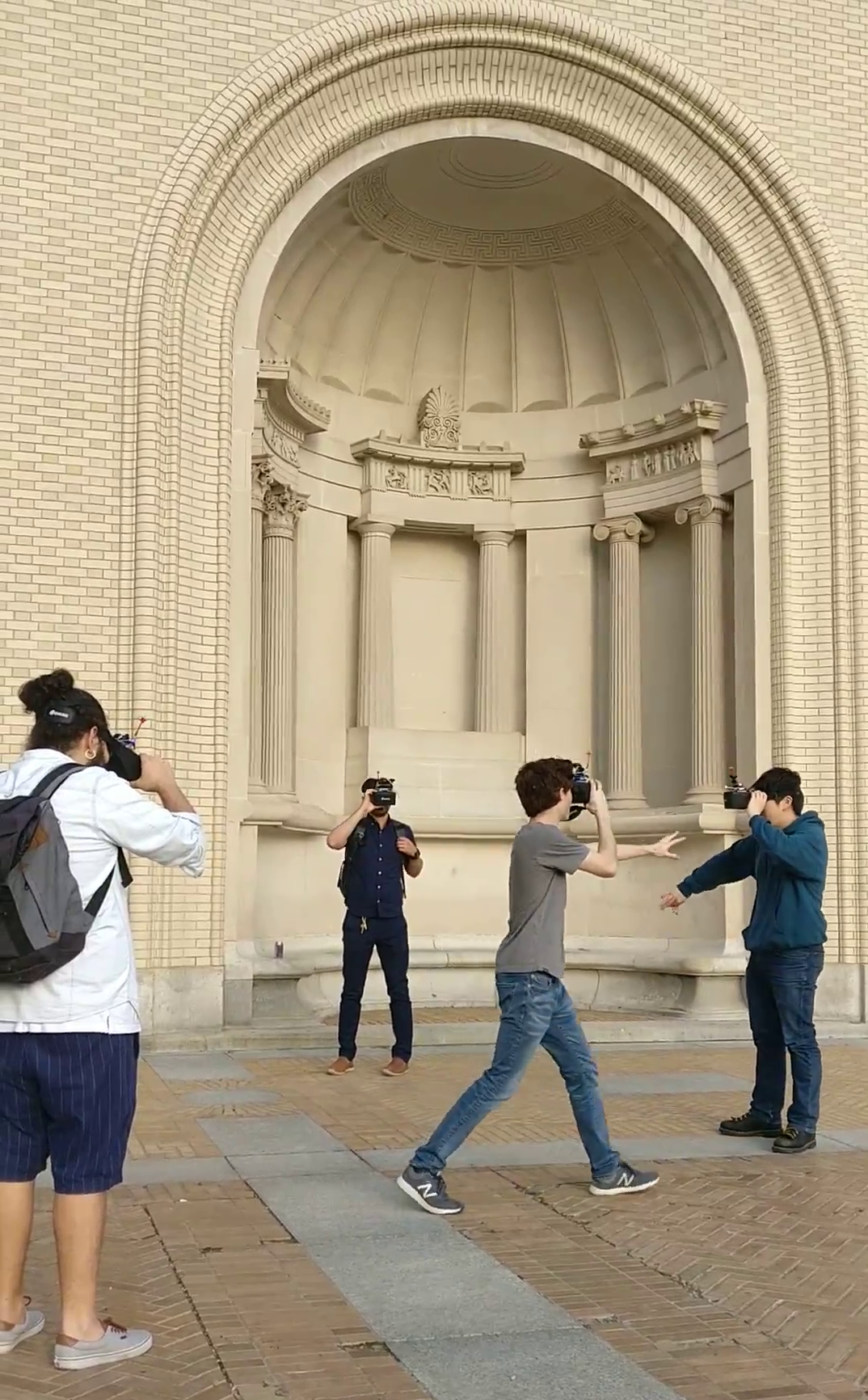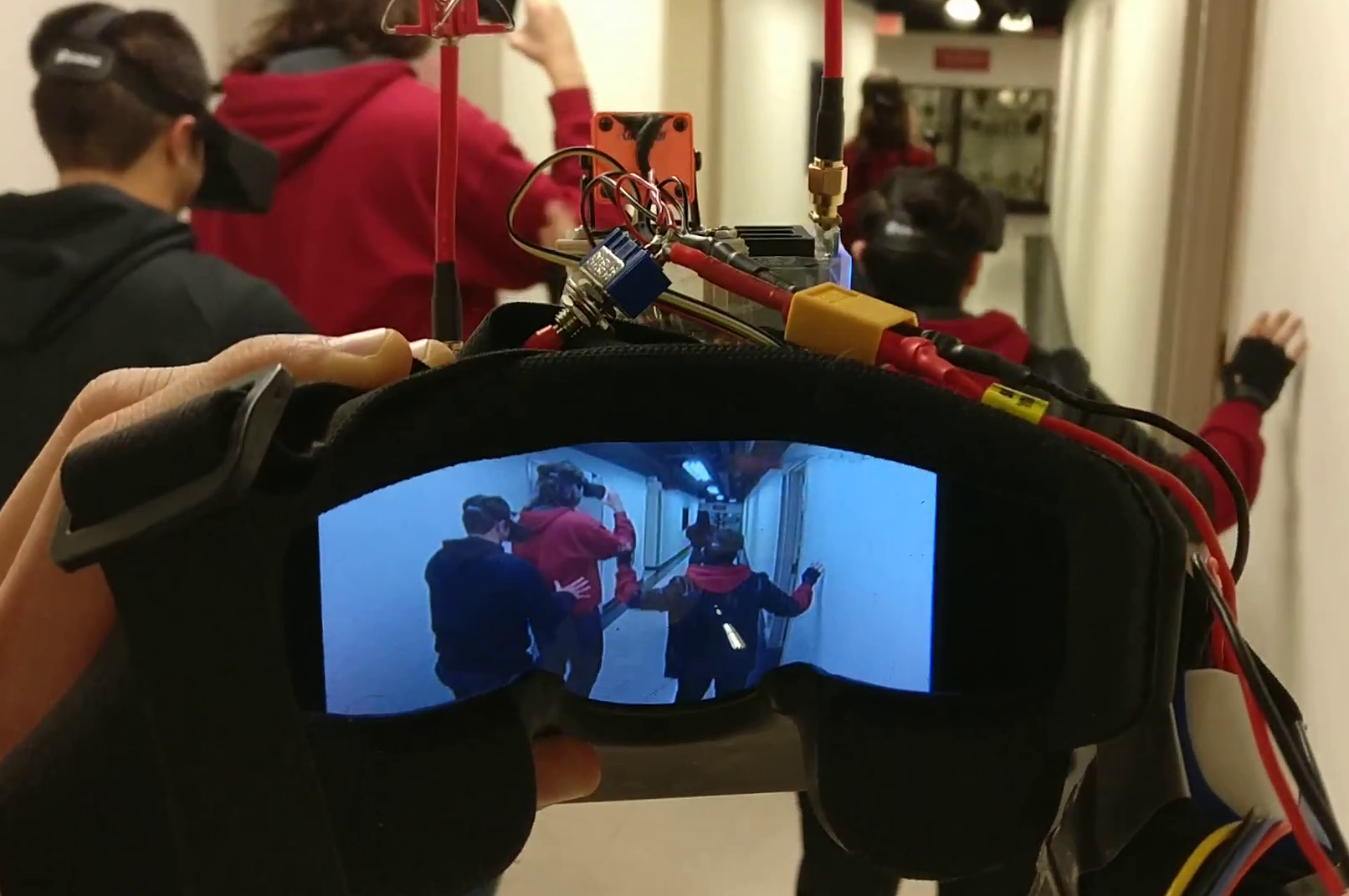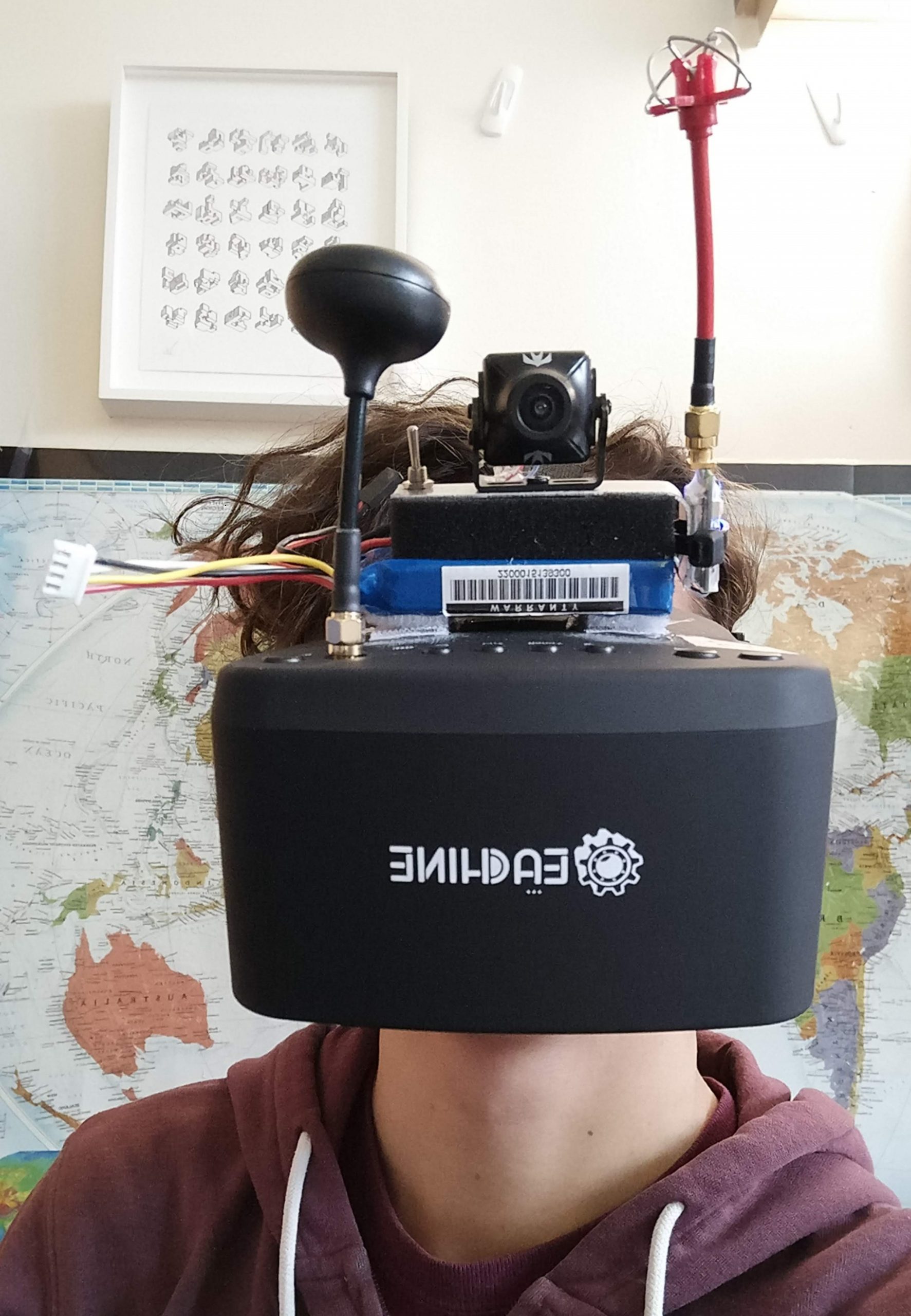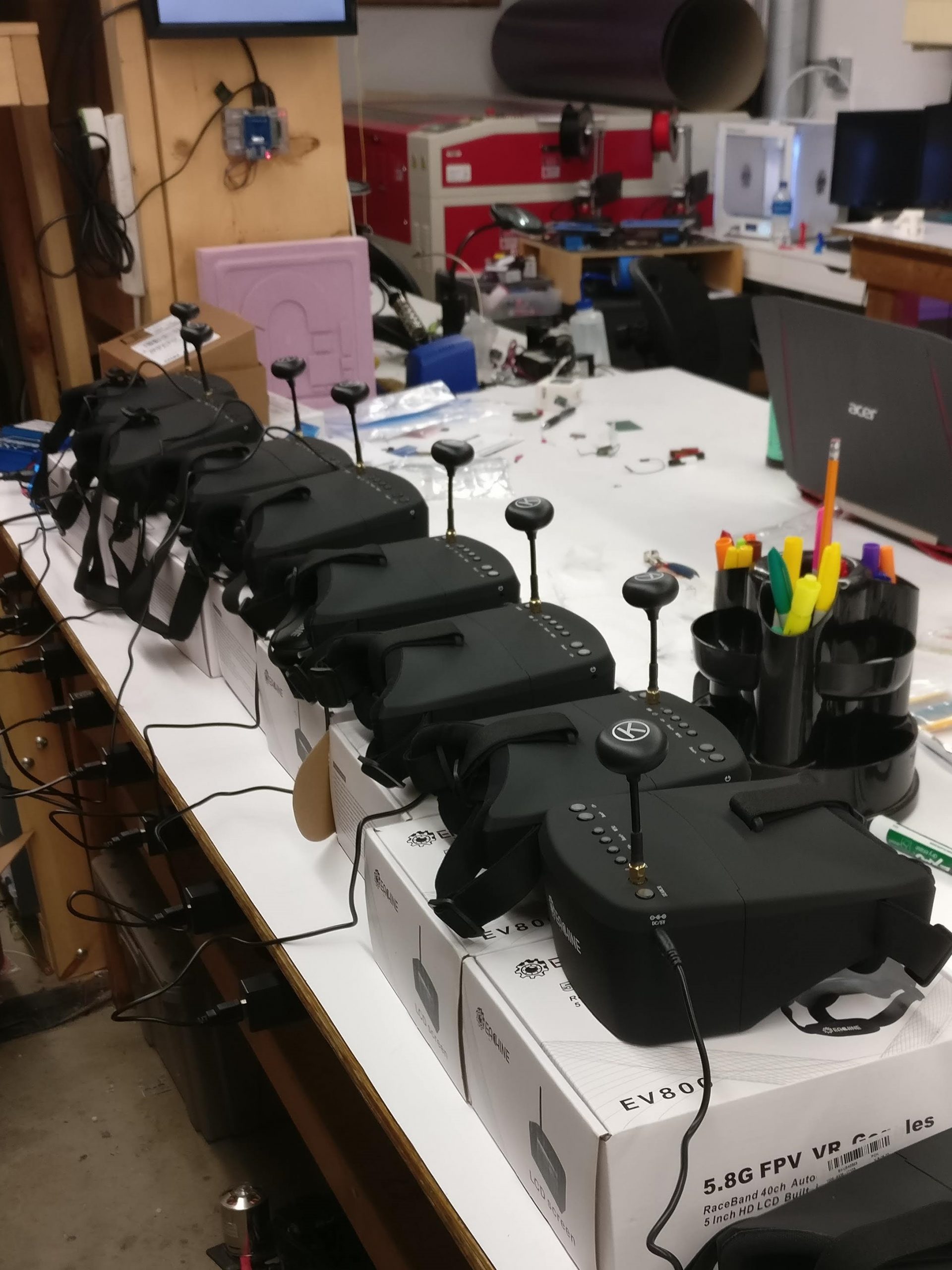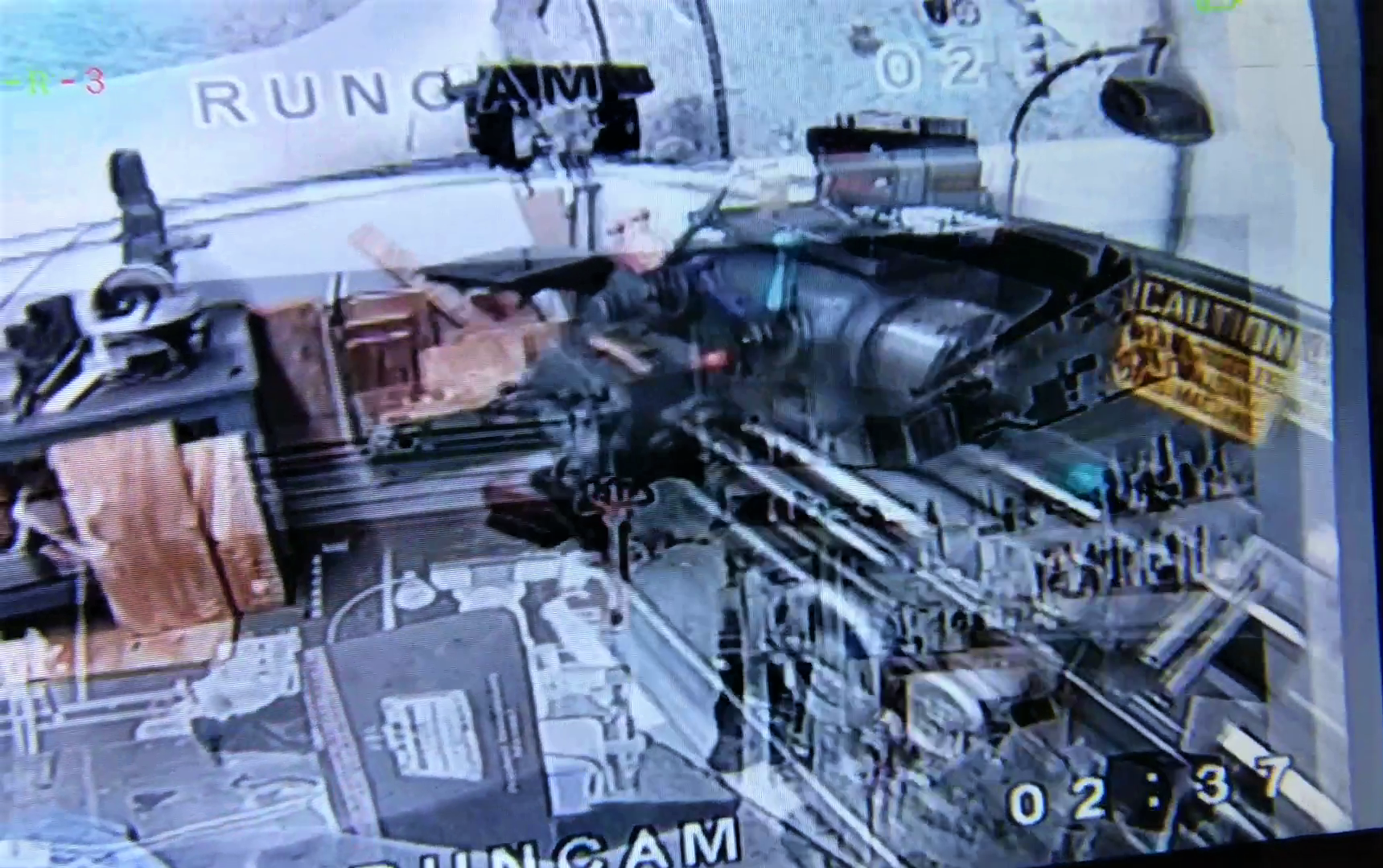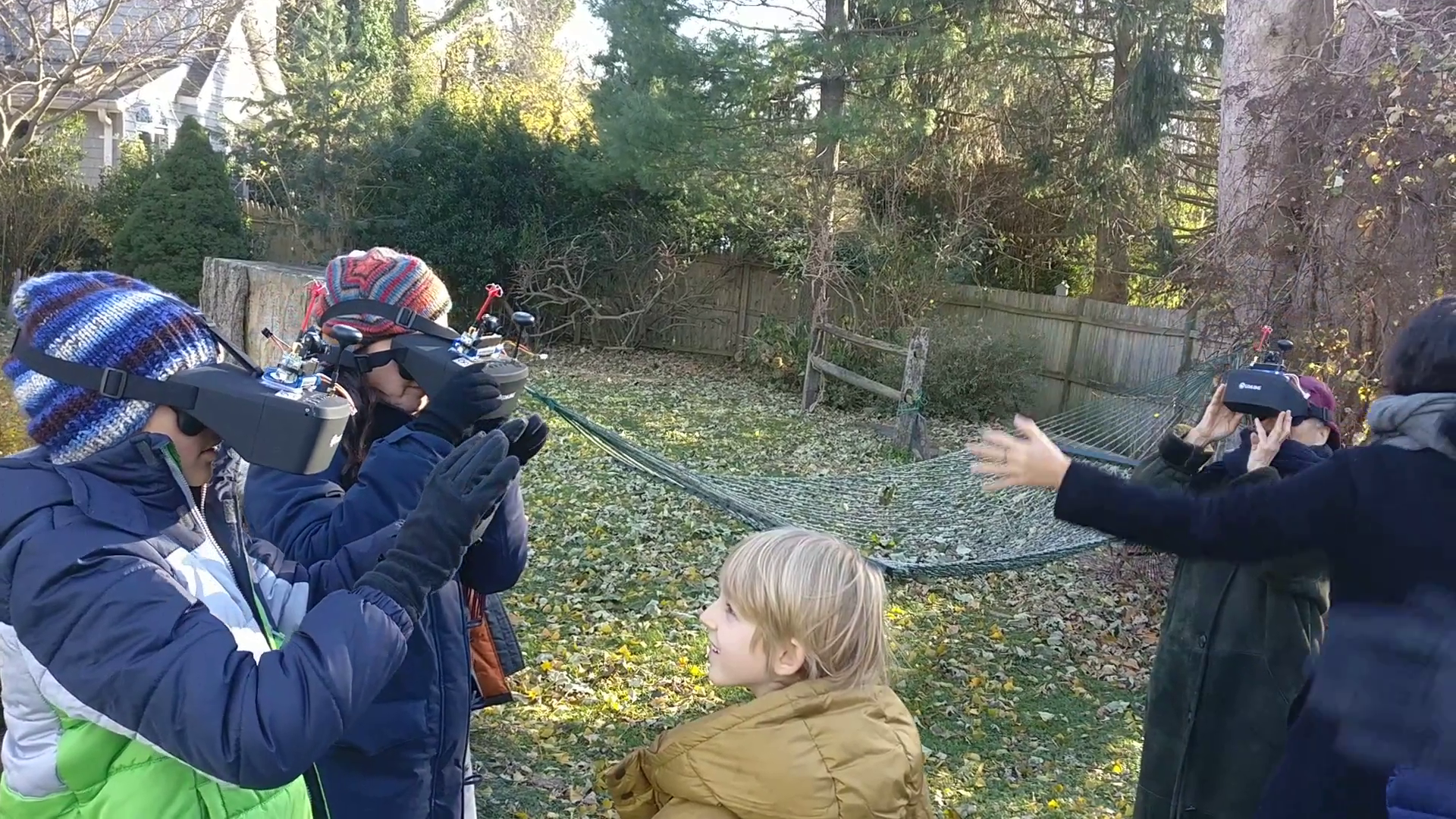Other Person View
Other Person View is a set of 8 headsets that allows users to see from each other’s perspectives. Each headset has a camera, video transmitter, receiver and display. The wearer can cycle through channels to switch whose camera they see out of, just like on a TV. If they find the right channel, they will see themselves from an outside perspective, allowing them to navigate their environment.
Other Person View by Elio Bourcart :: Supported by FRFAF (#2019-015) from STUDIO for Creative Inquiry on Vimeo.
Bourcart writes: “I have shared the headsets with strangers, friends, and family to learn what kind of experience they provide. Many try to walk towards their friends or attempt a handshake with whomever’s camera they are seeing out of. Tag becomes a much more interesting, albeit difficult game. I also brought them to a birthday party, and we managed to burst a pinata from the third person. I tried wearing a headset for extended periods of time (including in class), but it’s not as interesting when there aren’t other people to receive video from.
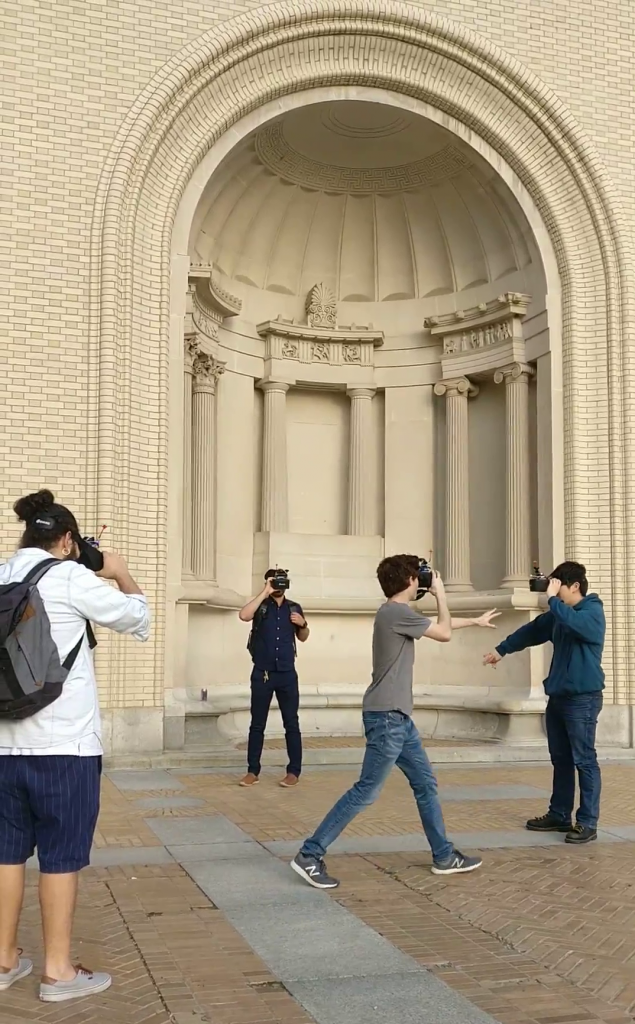
Your first impression after donning a headset is disorientation. The resolution is not great, and ultimately, you are not in control of your vision. You might be shocked when you first see yourself from someone else’s camera. But with some practice, it becomes astonishingly easy to avoid obstacles, walk towards a destination, and even grab objects. One talented user poured himself a drink from a head-on perspective. If you’re switching channels, you will eventually return to your own channel. However, after seeing from other people’s perspectives for so long, you may assume you are still doing so. It takes a second to realize that you are back in control of your sight, which is at once reassuring and disappointing. The overall sensation of Other Person View is one of disembodiment and confusion, but with a playful twist.
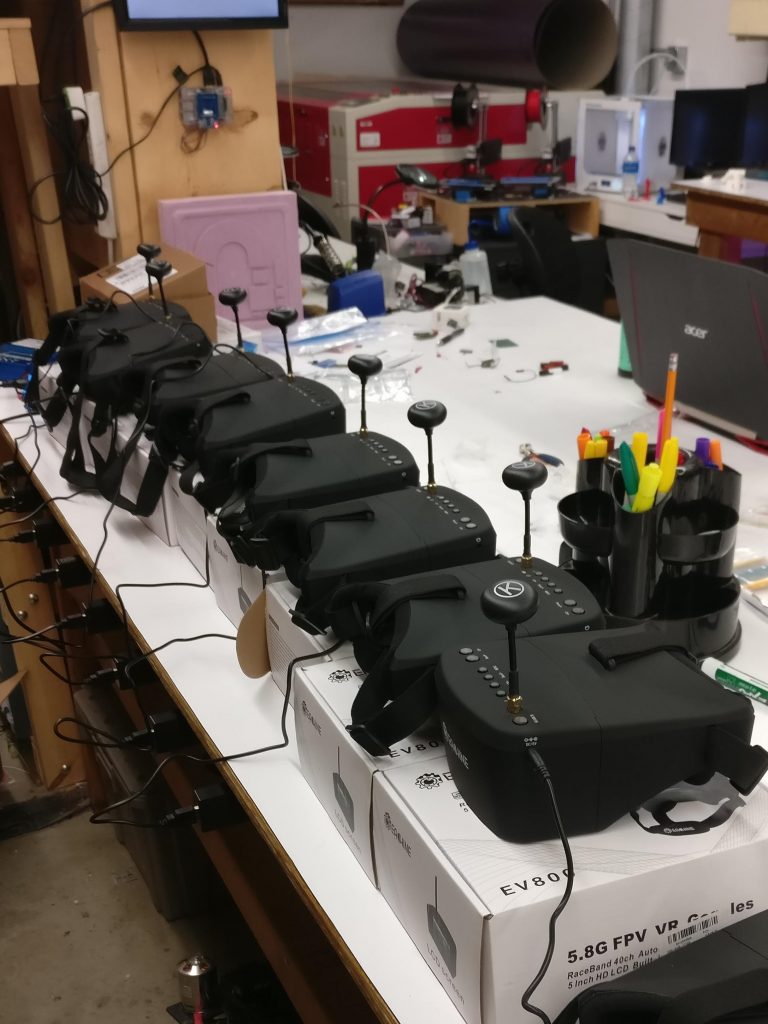
There are other projects which involve changing someone’s point of view to somewhere else in a space, most notably BeAnotherLab and Ehrsson Lab at the Karolinska Institute. BeAnotherLab leverages shared perspectives and empathy to address social and cultural issues. The Ehrsson Lab is more scientific, researching body ownership. Both employ multisensory illusion to trick the user’s mind into believing they are in another body, among other applications. Neither has more than two participants at a time. Other Person View introduces group dynamics with the sacrifice of convincing illusion.
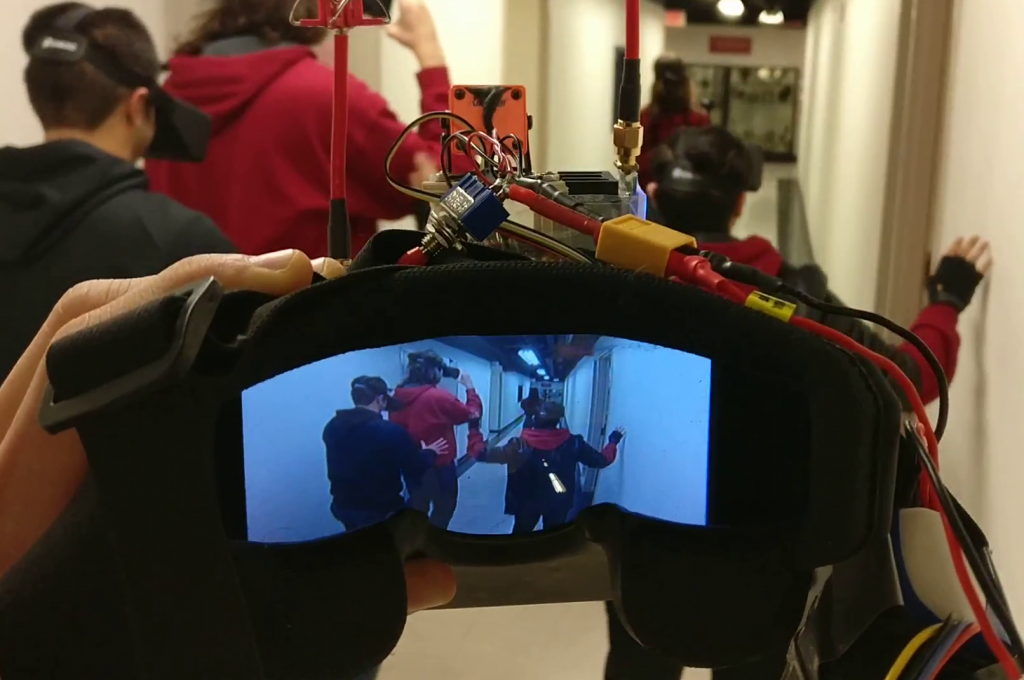 Aesthetically, the analog video provides an interesting departure from current trends in VR. While VR creates realistic virtual environments, OPV distorts real environments. This is because all of the components come from drone racing, and pilots opt for responsive, reliable video over resolution or color accuracy. When all 8 headsets are in use, radio interference can cause color distortion, static, and image bleeding, which could be manipulated into its own art form.”
Aesthetically, the analog video provides an interesting departure from current trends in VR. While VR creates realistic virtual environments, OPV distorts real environments. This is because all of the components come from drone racing, and pilots opt for responsive, reliable video over resolution or color accuracy. When all 8 headsets are in use, radio interference can cause color distortion, static, and image bleeding, which could be manipulated into its own art form.”
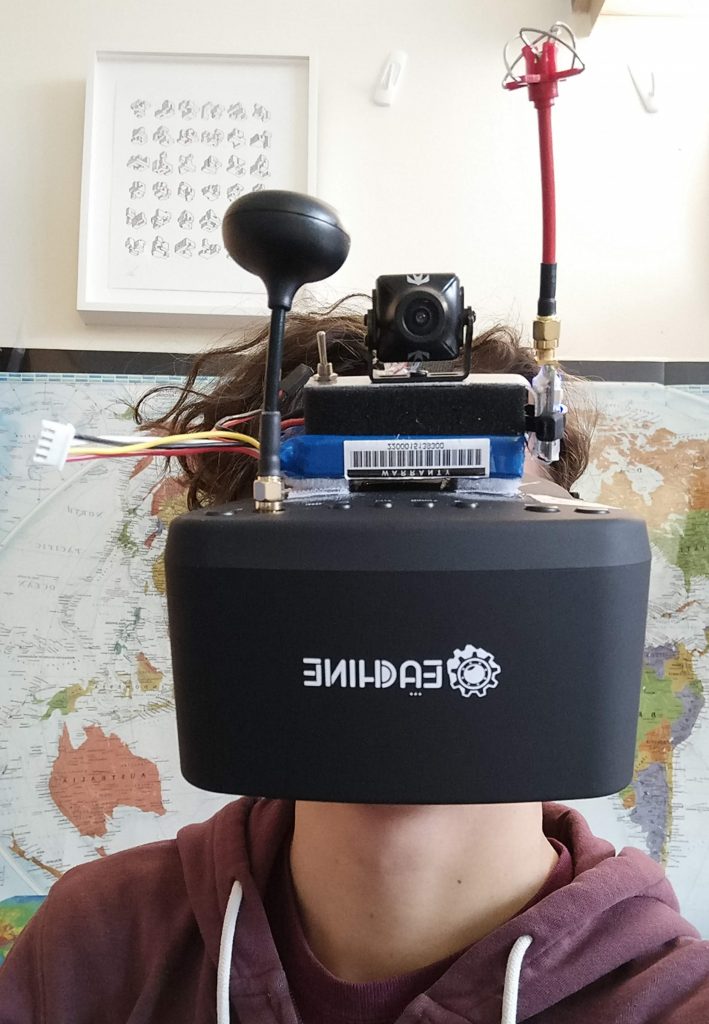
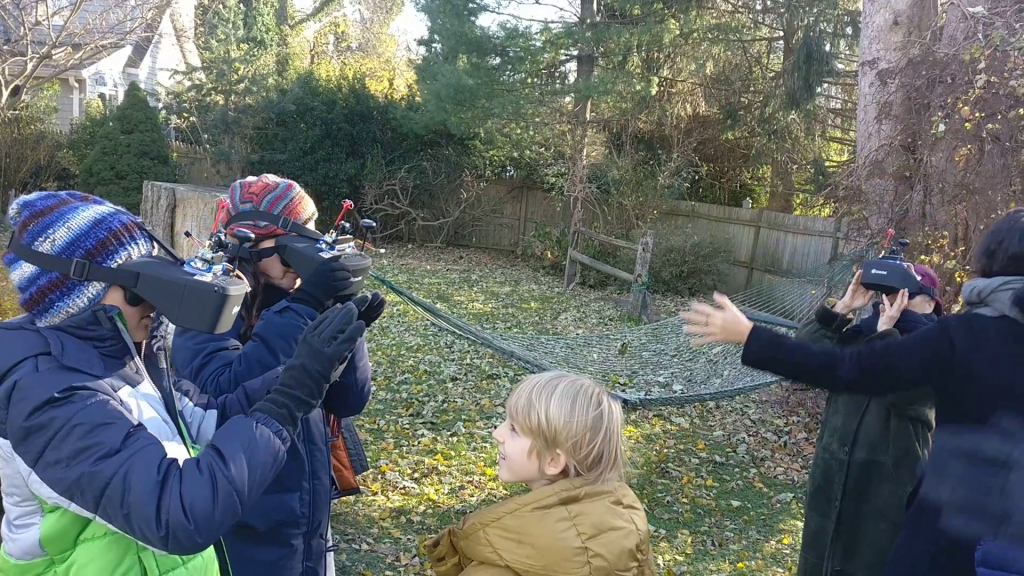 Other Person View was made possible with support from Grant#2019-015 from the Frank-Ratchye Fund for Art @ the Frontier.
Other Person View was made possible with support from Grant#2019-015 from the Frank-Ratchye Fund for Art @ the Frontier.
